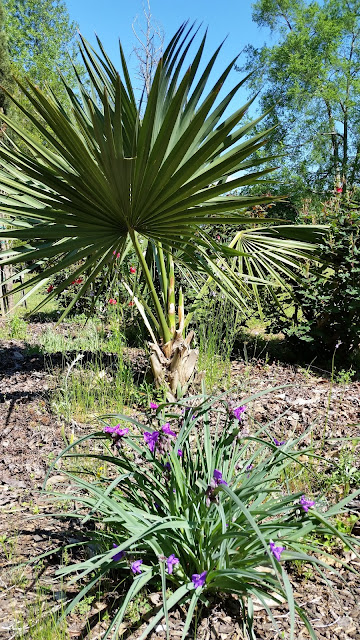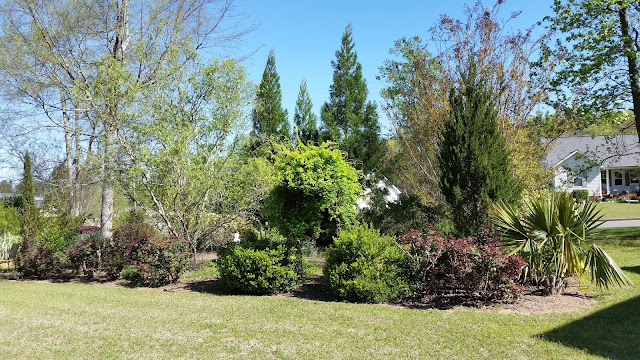A CAUTIONARY NOTE FOR
THE DSC
The schismatic diocese of South Carolina (DSC) is supposedly in "discernment" about whether to join the Anglican Church in North America. A special convention is expected to be called this autumn to pass the first approval. The second and last vote will come in the regular convention of March 2017. Since the committee on affiliation is recommending joining ACNA, and the committee was personally named by Mark Lawrence, it is a foregone conclusion that DSC will join ACNA. (See my post of March 23, 2016, "South Carolina and the Anglican Church in North America.")
The recent election of a new bishop in the schismatic diocese of Pittsburgh should be a cautionary note for the folks in South Carolina. See the excellent description in EpiscopalCafé: www.episcopalcafe.com/holy-spirit-stirring-in-acna-pittsburgh-diocese/ and the comment of blogger Mark Harris: www.anglicanfuture.blogspot.co.nz/2016/04/let-this-be-sign-unto-youacna-and.html .
On April 23, the Anglican Diocese of Pittsburgh (ADP) (of the Anglican Church in North America, ACNA) held an election for a bishop to replace retiring Robert Duncan. Originally eight candidates were presented but three dropped out leaving five, all from outside the diocese. Another candidate was nominated from the floor, the Rev. Jonathan Millard, a popular rector in the diocese. He was obviously the first choice of the clergy and laity of the diocese, but just before the election, Duncan issued a dire warning to the assembly that Millard might not get approved by the College of Bishops of ACNA because he was divorced. (Ironically Duncan had been elected bishop of Pittsburgh after being nominated from the floor). On the first ballot, Millard led the field with clearly the highest votes in both clergy and laity. The Rev. Jim Hobby, rector of an Anglican church in Thomasville GA, trailed. The same was true on the second ballot as Millard remained the clear favorite among both clergy and laity. On the third ballot, three candidates remained and votes shifted toward Hobby. By the fourth ballot, Hobby was ahead and Millard dropped away. Hobby was elected on the fifth ballot. In the end, the diocesan convention elected a person who was not the leading favorite of the assembly.
Under the Constitution and Canons of ACNA, power is concentrated at the top, in the archbishop and the College of Bishops. A bishop is nominated by election in the diocese but must be approved by a two-thirds vote of the College of Bishops. In TEC, bishops are normally approved by a majority of the Standing Committees of the dioceses. The ACNA C and C also spell out the approval of sexual relations only within a permanent and lifetime matrimonial union of one man and one woman. This sets a very high bar indeed as it would presumably disqualify anyone for bishop who ever had any kind of sexual relations outside of legal, heterosexual marriage as well as divorced men (only men can be bishops in ACNA). Even so, the delegates in Pittsburgh wanted to elect, and almost did elect, a man outside the narrow bounds as laid out in the ACNA C and C.
Before the good people of DSC go headlong into the ACNA, they should be aware of what joining will mean to their selections of their own bishops. They will have to follow out-of-date and very narrow guidelines that will eliminate many good candidates, as Millard. They will also have to submit to near-dictatorial rule of the ACNA hierarchy. A two-thirds vote is tantamount to a veto among the bishops of ACNA. This will leave DSC, as it has ADP, at the mercy of the ACNA archbishop (who alone can convene the College of Bishops) and bishops. DSC will be very highly constricted in whom it can choose as its own bishop. This is a cautionary tale for a "diocese" that for years before the schism of 2012 railed long and hard against the supposed tyranny and dictatorship of the Episcopal Church. In reality, ACNA is far more undemocratic than TEC ever was. DSC may have to learn this the hard way, as the good people of Pittsburgh have just learned.
The schism in Pittsburgh has not gone so well for the planners, not only in the defiant vote mentioned above. State courts ruled entirely in favor of the Episcopal diocese. Some local churches that initially broke away, returned to TEC. The Episcopal diocese now lists 36 local churches and about 10,000 members while the Anglican diocese lists 40 churches and 7,937 members with many in these numbers being beyond the geographical boundaries of the old diocese.
The schism in Pittsburgh has not gone so well for the planners, not only in the defiant vote mentioned above. State courts ruled entirely in favor of the Episcopal diocese. Some local churches that initially broke away, returned to TEC. The Episcopal diocese now lists 36 local churches and about 10,000 members while the Anglican diocese lists 40 churches and 7,937 members with many in these numbers being beyond the geographical boundaries of the old diocese.


















